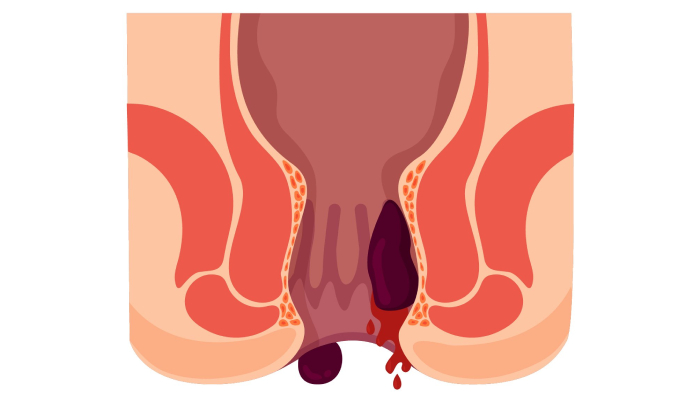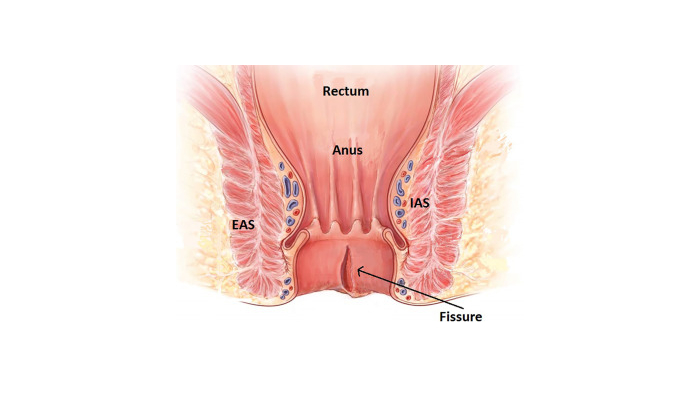Expert Care for Hemorrhoids (Piles) with Dr. Ujwal Zambare
Hemorrhoids, also known as piles, are swollen and enlarged veins in the anus and rectum that can cause pain, discomfort, anal itching, and rectal bleeding. While they are naturally present in the body, they become problematic when they swell and lead to irritating symptoms.
If suffering from Hemorrhoids consult Dr. Ujwal Zambare he provides best care for hemorrhoids, offering advanced diagnosis and effective treatment for it. While mild cases can be managed with dietary changes and home remedies, severe cases may require medical intervention for lasting relief.
Fissure
An anal fissure is a tear in the lining of the anus or anal canal (the opening through which stool passes out of the body). The fissure can be painful and may bleed. One sign of an anal fissure is pain during or after a bowel movement.
An acute anal fissure looks like a fresh tear, somewhat like a paper cut. A chronic anal fissure likely has a deeper tear, and may have internal or external fleshy growths. A fissure is considered chronic if it lasts more than eight weeks. An acute anal fissure looks like a fresh tear, somewhat like a paper cut. A chronic anal fissure likely has a deeper tear, and may have internal or external fleshy growths. A fissure is considered chronic if it lasts more than eight weeks.


Causes
Hemorrhoids
Straining puts pressure on veins in the anus or rectum, causing hemorrhoids. You might think of them as varicose veins that affect your bottom.
Any sort of straining that increases pressure on your belly or lower extremities can cause anal and rectal veins to become swollen and inflamed. Hemorrhoids may develop due to:
- Pelvic pressure from weight gain, especially during pregnancy.
- Pushing hard to have a bowel movement (poop) because of constipation.
- Straining to lift heavy objects or weightlifting.
Anal Fissure
Anal fissures can be caused by trauma to the anus and anal canal. The trauma can be caused by one or more of the following:
- Chronic (long-term) constipation
- Straining to have a bowel movement, especially if the stool is large, hard and/or dry
- Prolonged diarrhea
- Anal sex, anal stretching
- Insertion of foreign objects into the anus
Risk Factors
Anal fissures can occur in anyone at any age. The chance of having an anal fissure decreases as people get older. People who have had fissures in the past are more likely to have them in the future.
Symptoms
Hemorrhoids
- Itchy anus.
- Hard lumps near the anus that feel sore or tender.
- Pain or ache in the anus, especially when you sit.
- Rectal bleeding.
Anal Fissure
- Pain during, and even hours after, a bowel movement
- Constipation
- Blood on the outside surface of the stool
- Blood on toilet tissue or wipes
- A visible crack or tear in the anus or anal canal
- Burning and itching that may be painful
How Are Hemorrhoids Diagnosed And Anal Fissures Diagnosed?
Hemorrhoids Diagnosed
- Digital rectal exam: Your provider inserts a gloved, lubricated finger into the rectum to feel for swollen veins.
- Anoscopy: Your provider uses an anoscope (lighted tube) to view the lining of the anus and rectum.
- Sigmoidoscopy: Your provider uses a sigmoidoscope (lighted tube with a camera) to view inside the lower (sigmoid) part of the colon and rectum. Procedure types include flexible sigmoidoscopy and rigid sigmoidoscopy (proctoscopy).
Anal Fissure Diagnosed
- Anoscopy. An anoscope is a tubular device inserted into the anus to help your doctor visualize the rectum and anus.
- Flexible sigmoidoscopy. Your doctor will insert a thin, flexible tube with a tiny video into the bottom portion of your colon. This test may be done if you’re younger than 50 and have no risk factors for intestinal diseases or colon cancer.
- Colonoscopy. Your doctor will insert a flexible tube into your rectum to inspect the entire colon. This test may be done if you are older than age 50 or you have risk factors for colon cancer, signs of other conditions, or other symptoms such as abdominal pain or diarrhea.
Treatments
- To relieve pain, sit in 8 to 10 inches of warm water (sitz baths) for 10 to 20 minutes several times a day.
- To reduce pain and swelling of a blood clot or protruding hemorrhoid, apply ice packs to the anal area for a few minutes
- After a bowel movement, it may be less irritating and painful to wipe with cotton balls soaked in water, rather than toilet paper.
- For minor pain or itching, or to reduce swelling, you may use over-the-counter topical creams/ointments or suppositories containing cortisone and formulated to relieve symptoms of hemorrhoids.
- Over-the-counter rectal wipes and ointments containing zinc oxide soothe the irritated area.
- Commercially available stool softeners can be used if needed, but laxatives should be avoided because they can be irritating.
- Try to avoid hemorrhoid remedies promising to anesthetize the pain (names often end in “-caine”) as they may cause even more irritation with prolonged use.
- Injection, cautery, or surgery may be required in stubborn cases.
When to Consult a Doctor?
If you are experiencing persistent pain, rectal bleeding, swelling, or discomfort due to hemorrhoids, it’s important to seek medical attention. Delaying treatment may lead to complications such as thrombosed hemorrhoids or chronic bleeding.
📞 Request a Call Back!
Need expert advice? Dr. Ujwal Zambare at True Life Clinic & Wellness Center is here to help. Schedule your consultation today for personalized care and effective treatment options.
